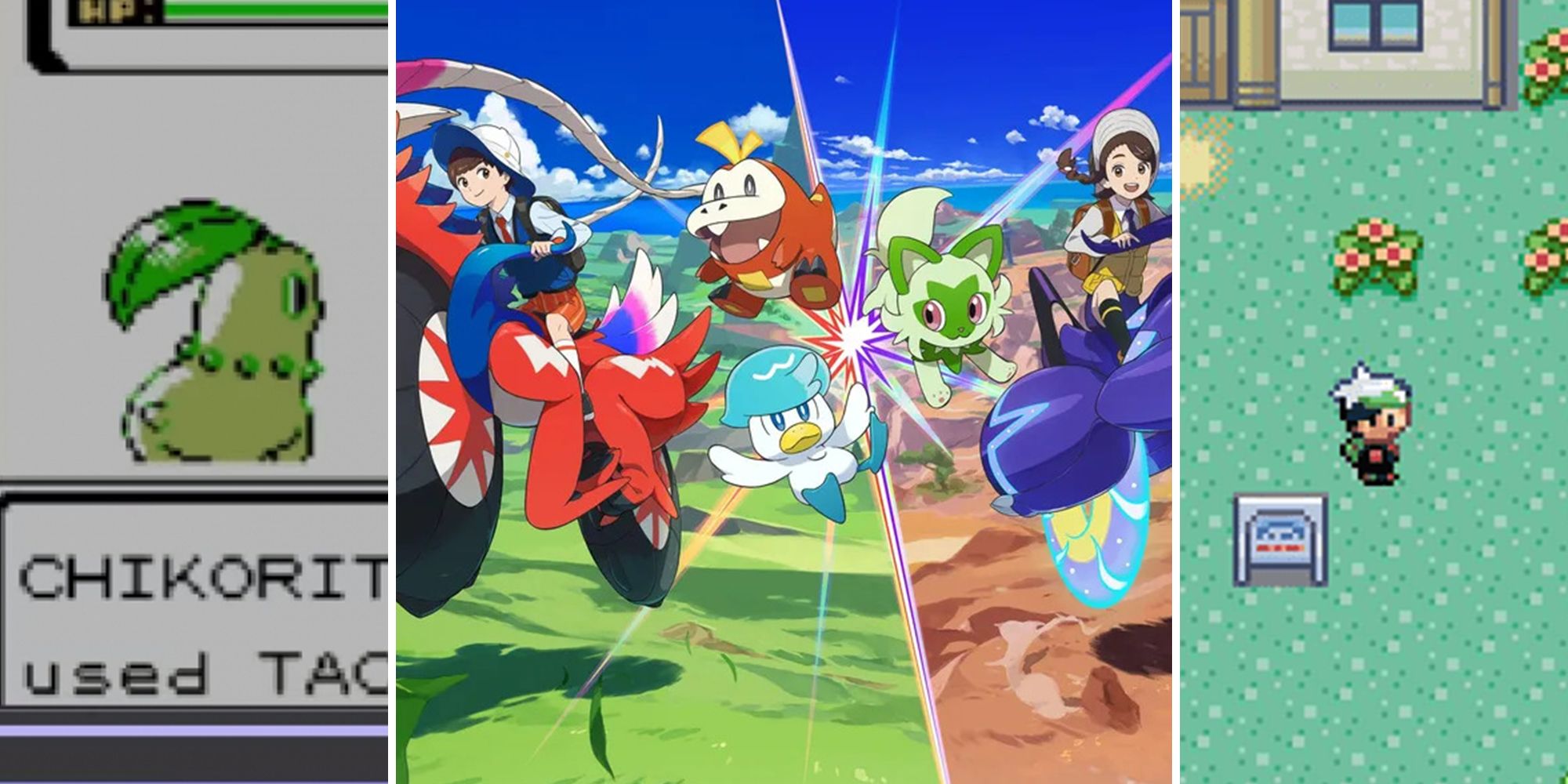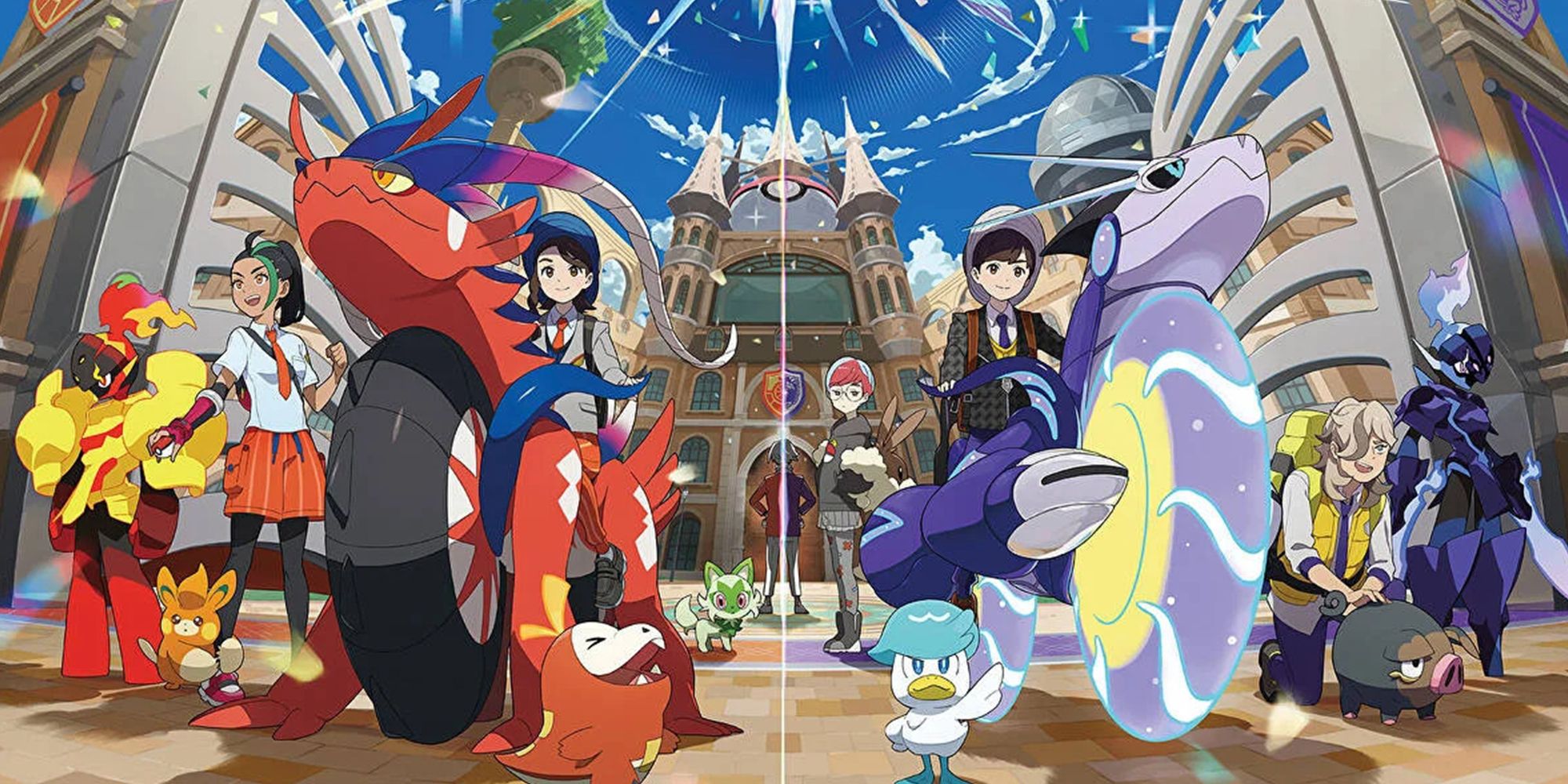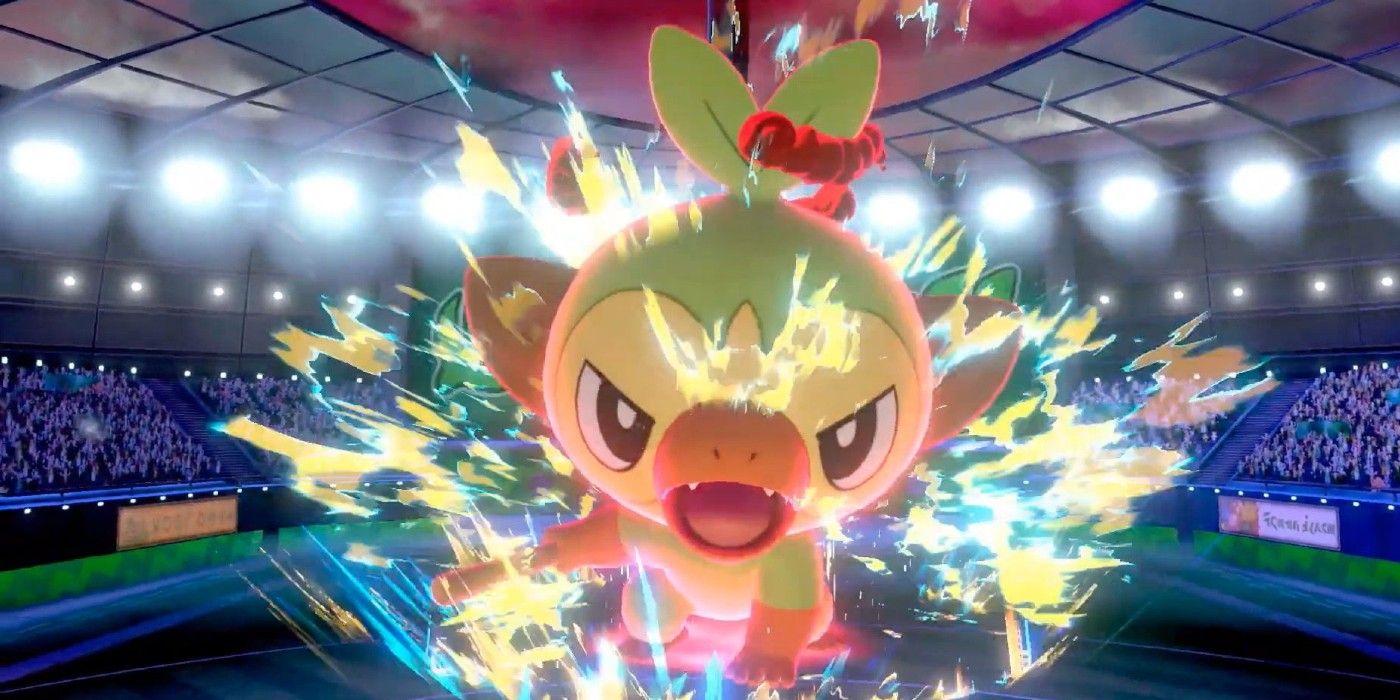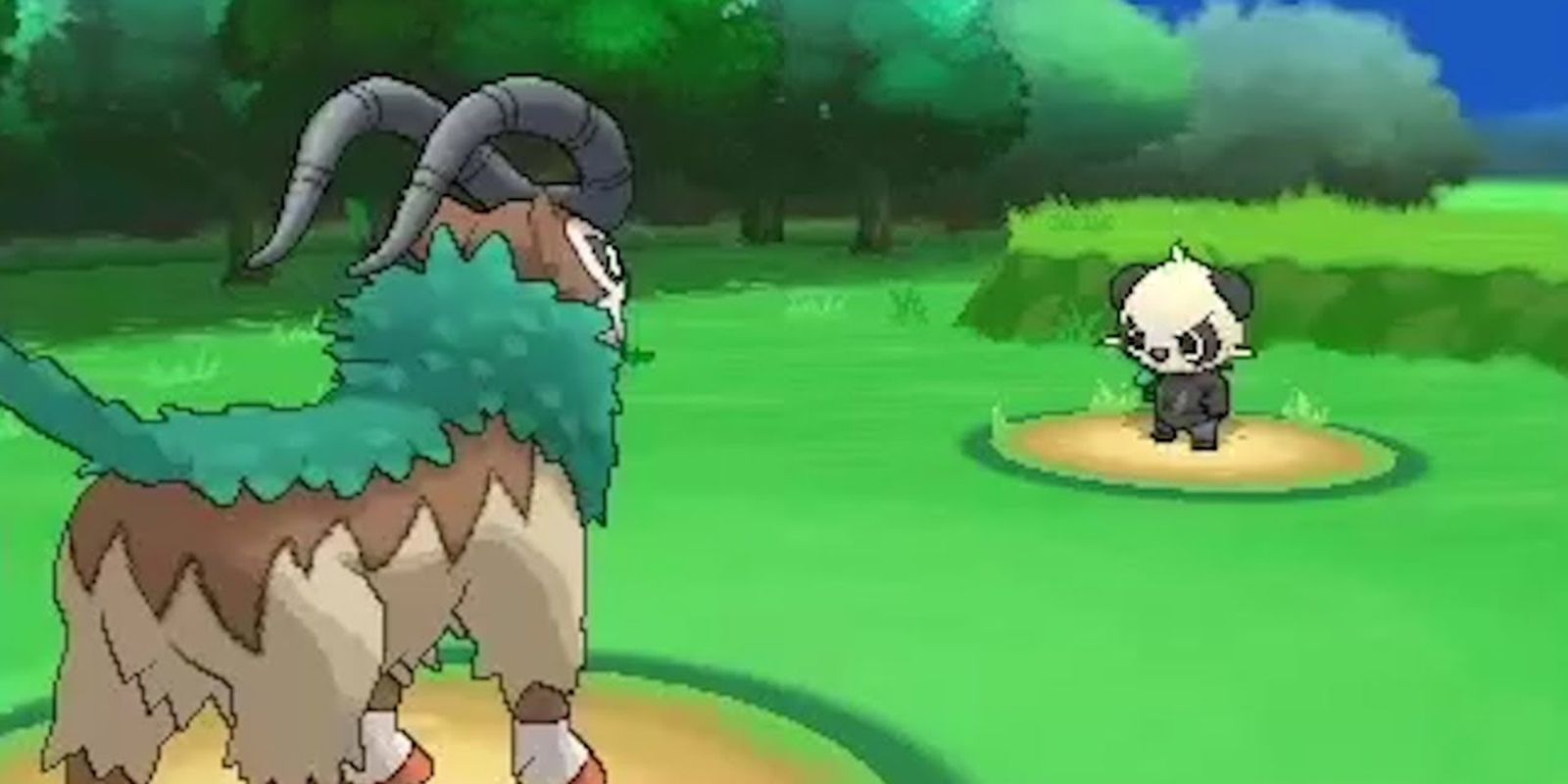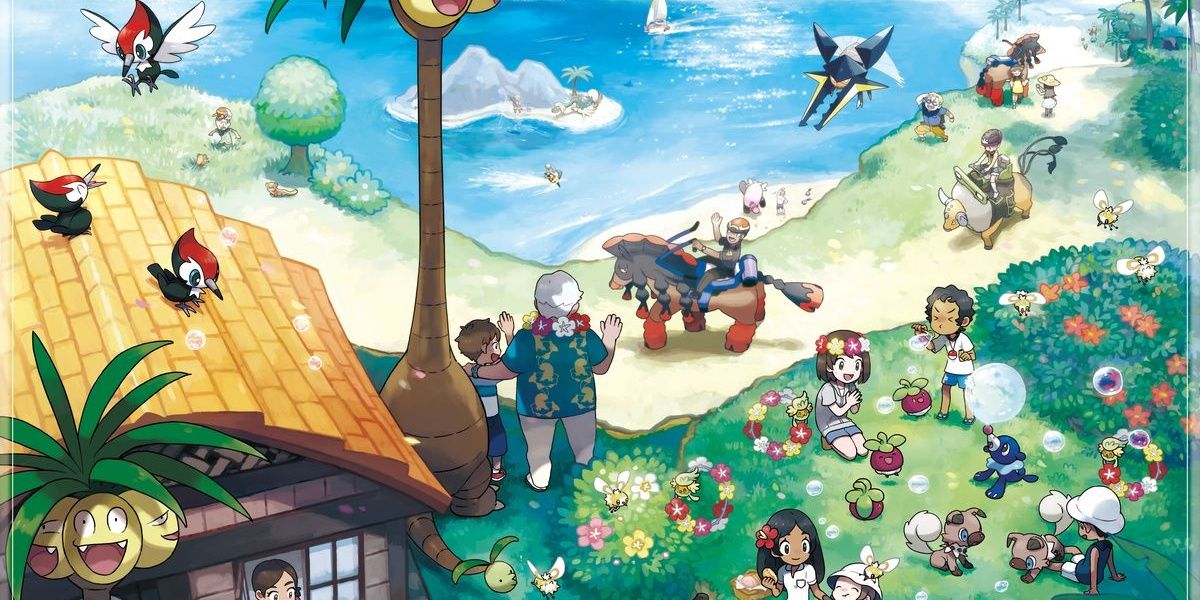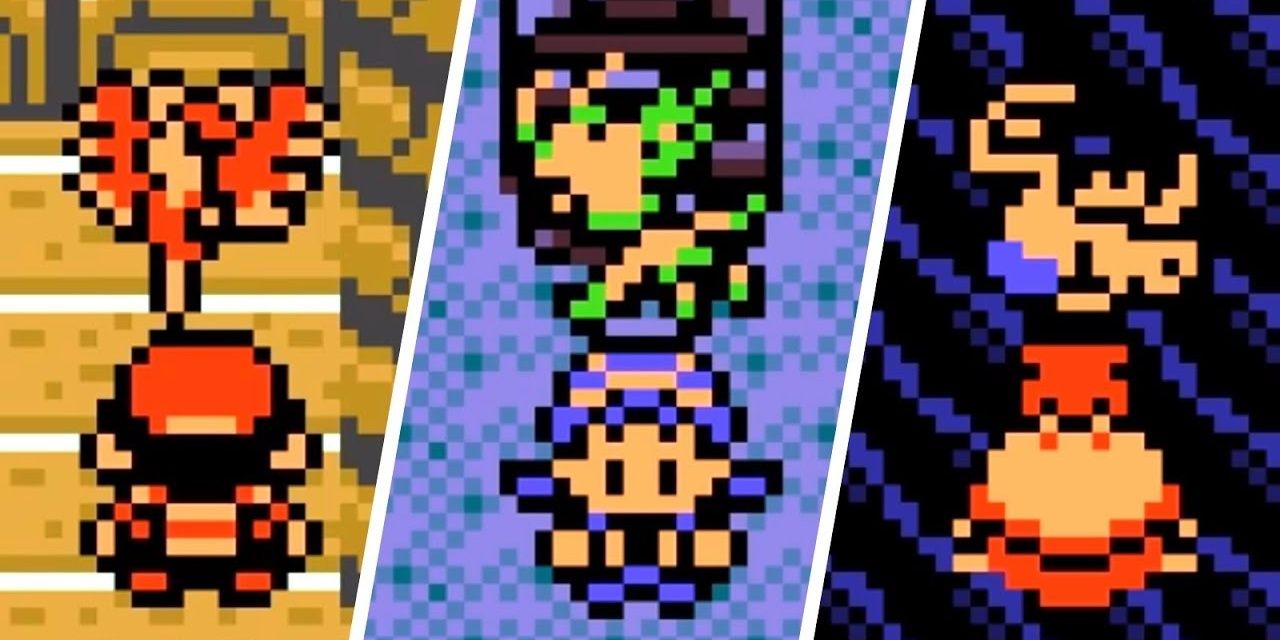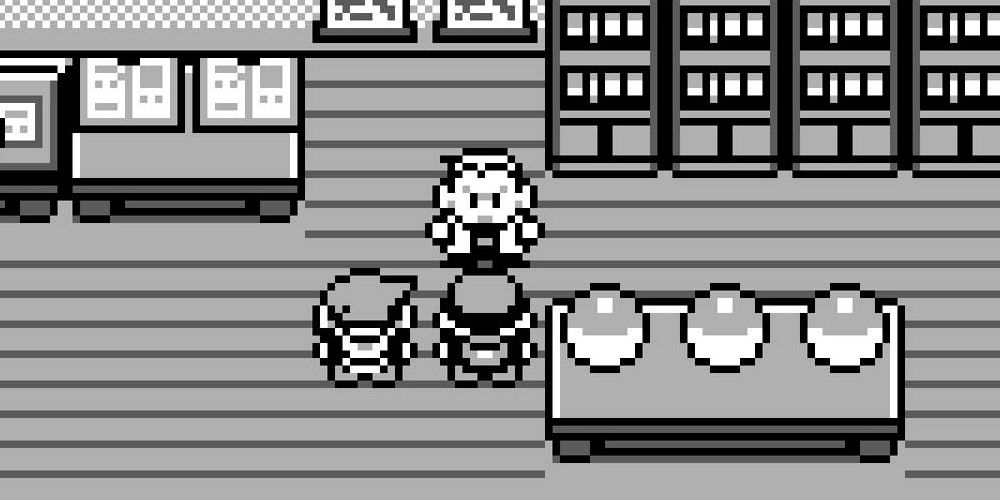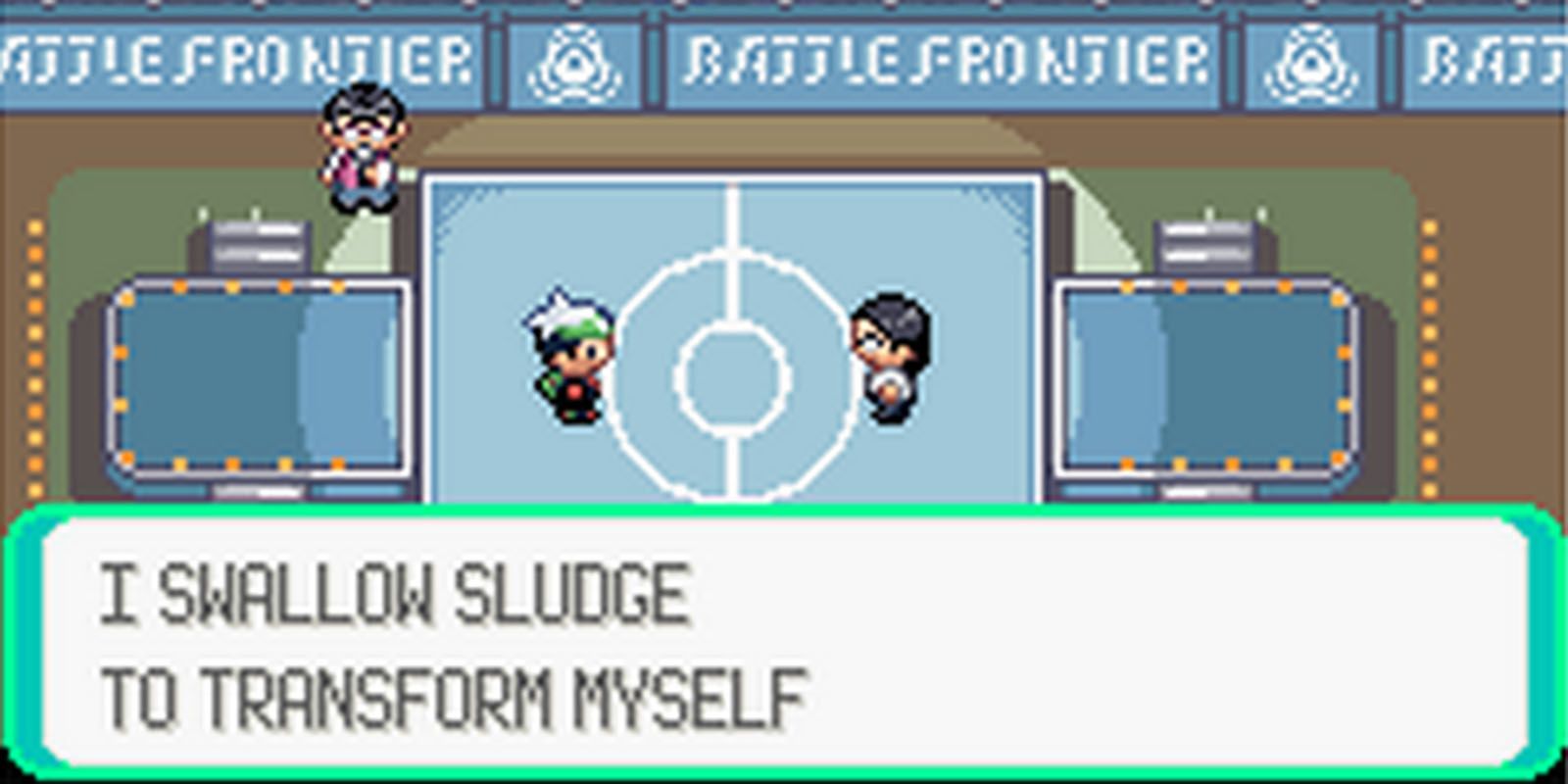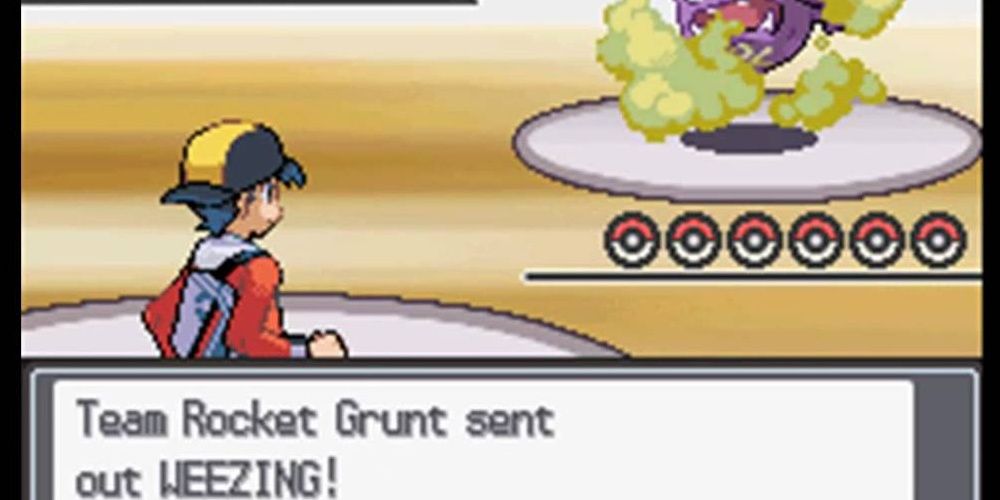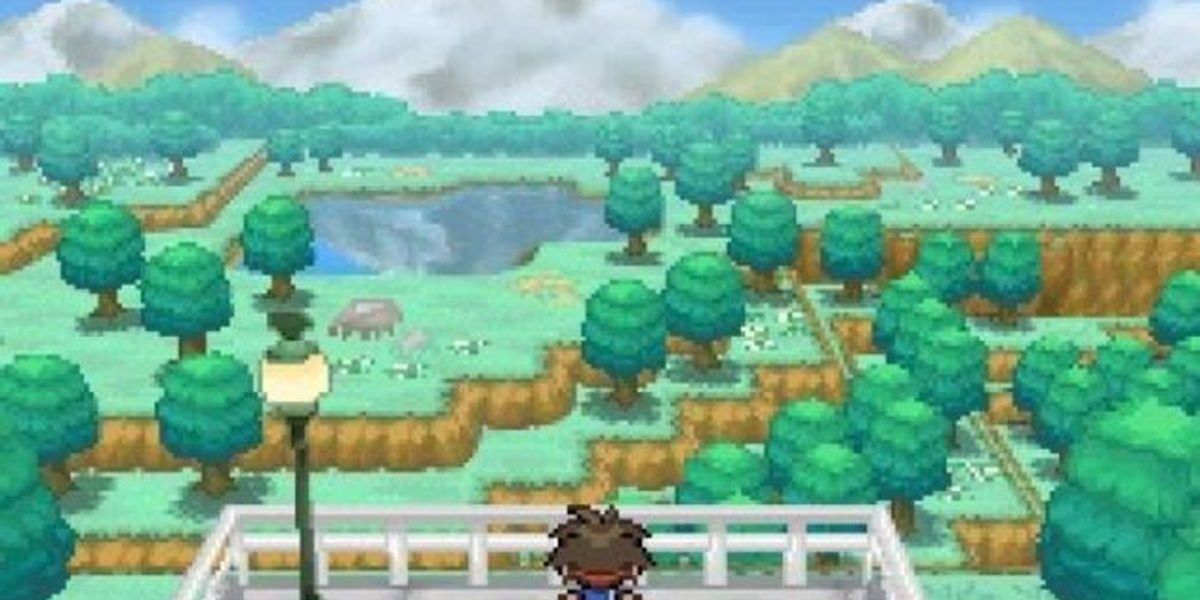Highlights
- Pokemon Scarlet & Violet offers little challenge, with a non-linear story and the ability to train Pokemon before tackling gyms or completing the game.
- Trainer battles are optional, and the EXP. Share feature makes leveling up Pokemon effortless.
- The Elite Four and Champion of Paldea in Scarlet & Violet are easily defeated, with underwhelming team compositions and lower levels compared to past generations.
The fact of the matter is that Pokemon is simply not a challenging franchise. Time and time again, mainline entries prove that they’re more focused on getting each Trainer to the Elite Four as comfortably as possible instead of offering a real challenge. Considering how much variety and customization Pokemon offers in regards to party composition, it’s a shame the difficulty curve is historically so low.
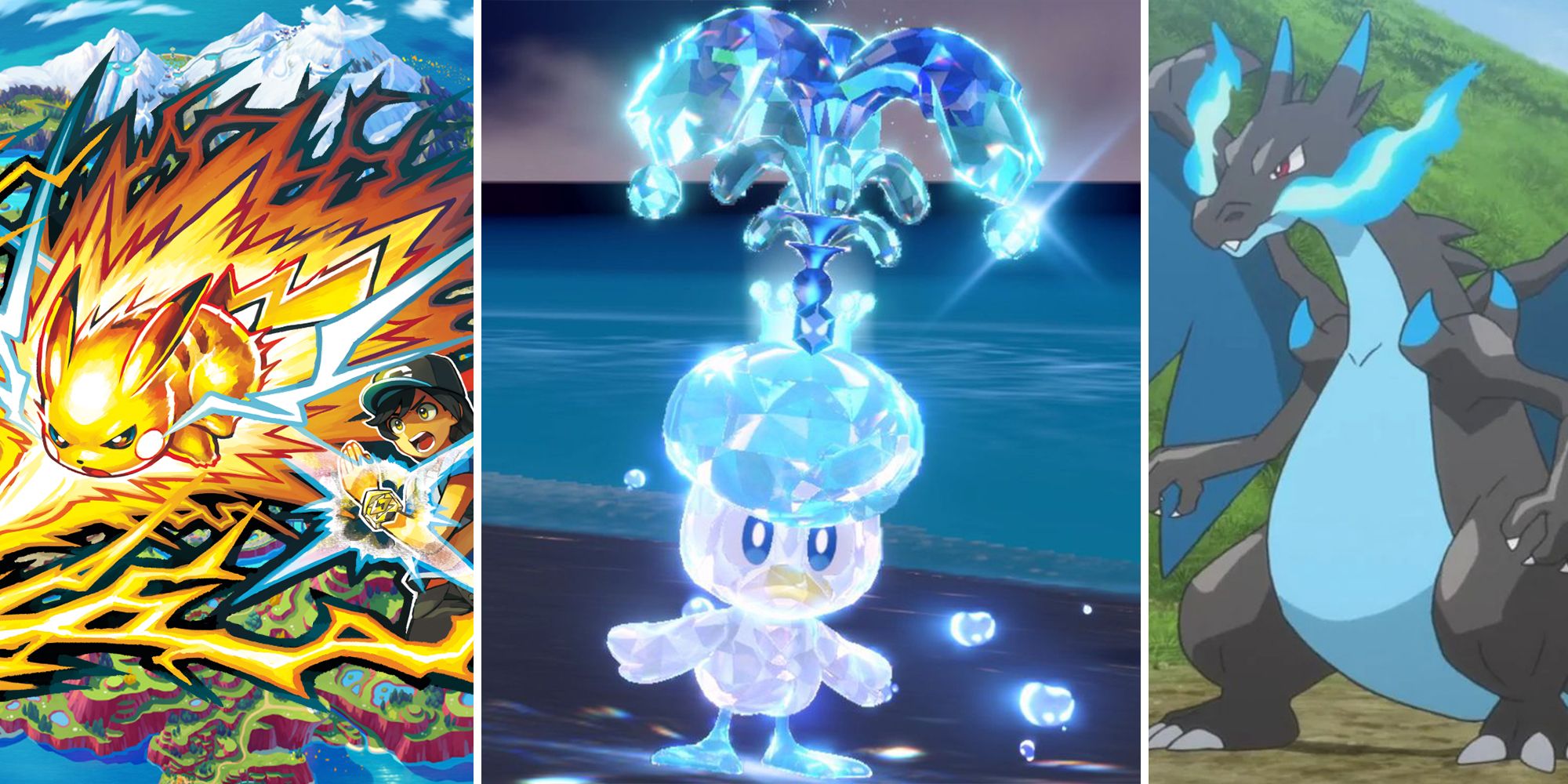
Pokemon: All The Gimmick Mechanics, Ranked
Pokémon has tried to change its gameplay with gimmicks over the years and some of them have been much better than others.But it wasn’t always like this. Although Pokemon has built a reputation for its easy difficulty, previous Generations actually made it a point to offer a decent challenge. While this isn’t the case for all the earlier Generations, Pokemon's easier curve is a recent trend. Believe it or not, there once was a time when Game Freak actually expected trainers to exert some effort; however, which is the hardest Pokemon generation?
Updated on November 19, 2023 by Mark Sammut: The specifications of the main Pokemon entries of every Generation have been added to the article.
9 Generation 9
Open-World & Beyond Easy
Pokemon Scarlet and Violet
- Platform(s)
- Switch
- Released
- November 18, 2022
- Developer(s)
- Game Freak
- How Long To Beat
- 31½ Hours
- Metascore
- 72
Pokemon Scarlet & Violet is just not a challenge, especially for older players of the game. There are several reasons for that, but the game's non-linear story plays a significant role in diminishing the difficulty. Trainers can go where they want in Paldea and train their Pokemon before even completing a single gym. In North Province (Area Three), eating a ham sandwich will spawn Chanseys that grant the user an insane amount of EXP, which can basically break the game.
Trainer battles are completely optional in Scarlet & Violet, and long gone are the days of needing to fight every trainer on every given road. Players can simply hop on Koraidon or Miraidon and surge through the landscapes. Even if people take on the trainers, the EXP. Share feature allows every Pokemon in the party to receive points to level up, making the process so much easier.
The gyms, team star raids, and Titan Pokemon all offer somewhat of a challenge, but players can select the order, so the chances are they may end up being over-leveled for the task. With each of the gyms and team stars having their unique types, this all just makes catering a team to each task so much easier. The Elite Four has never been easier than in Scarlet & Violet, with Pokemon boxes readily available in the trainer's bag. Players can make a team for each member and swap them in prior to a battle, removing the need to create a well-rounded party that can survive a gauntlet.
This is also the case of the Champion of Paldea, Greeta, whose team doesn't look like much when compared to the well-crafted teams of Cynthia and Blue of generations past. Greeta has three Pokemon weak to Fighting-types (one quad weak) and two Psychic-type Pokemon which can be taken down by solid Ghost, Bug, or Dark-types. The new Ghost/Fighting Annihlape will have a field day when it comes to taking on Greeta. Her original team starts at level 61, which is considerably lower in comparison to some other trainers.
Greeta's second team round is harder but still should be no match for trainers at that point in the game:
Espathra – Lv.69 (Oppurtinist) Psychic
- Lumina Crash
- Dazzling Gleam
- Quick Attack
- Reflect
Gogoat – Lv.69 (Sap Sipper) Grass
- Horn Leech
- Zen Headbutt
- Play Rough
- Bulk Up
Veluza – Lv.69 (Mold Breaker) Water/Psychic
- Aqua Jet
- Liquidation
- Psycho Cut
- Ice Fang
Avalugg – Lv.69 (Own Tempo) Ice
- Avalanch
- Cruch
- Earthquake
- Body Press
Kingambit – Lv.69 (Supreme Overlord) Dark/Steel
- Iron Head
- Kowtow Cleave
- Zen Headbutt
- Stone Edge
Gimmora – Lv.70 (Toxic Debris) Rock/Poison (Rock Tera Type)
- Tera Blast
- Sudge Wave
- Earth Power
- Dazzling Gleam
8 Generation 8
New 3D Era & Easier Than Ever (At That Point)
Pokemon Sword and Shield
- Platform(s)
- Switch
- Released
- November 15, 2019
- Developer(s)
- Game Freak
- How Long To Beat
- 26 Hours
- Metascore
- 80
Generation 8 really should have been a turning point for the franchise. After years of structural stagnation, Sword & Shield was positioned as the games to finally transition Pokemon from 2D to 3D. It didn’t take long for the new generation to garner controversy, in large part due to Galar serving as the first region to actually exclude Pokemon from the final Pokédex.
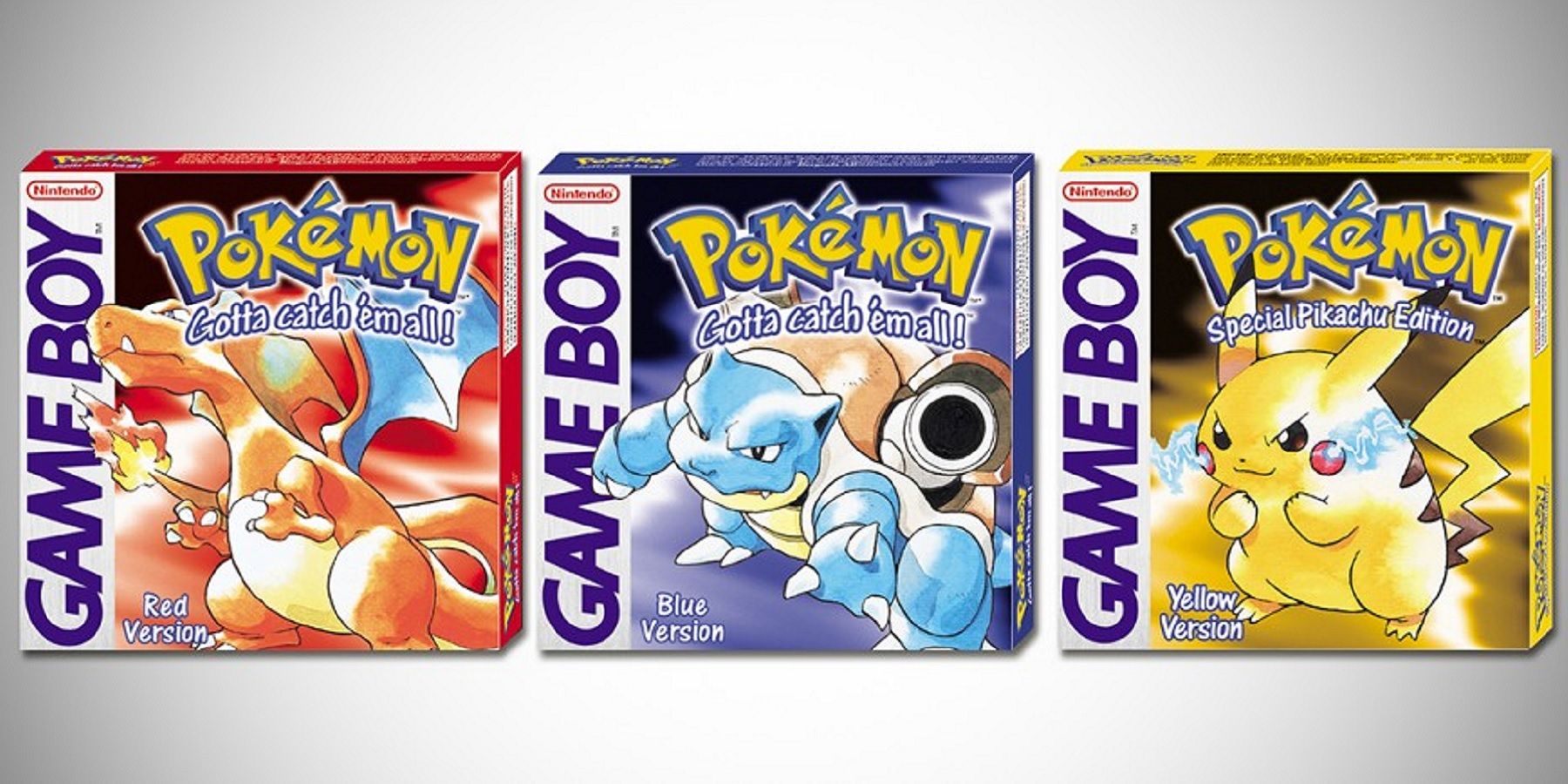
Classic Pokemon Games Rumored for Switch Online
A new rumor making the rounds online suggests that Nintendo may be bringing classic Pokemon games to its Switch Online service.If nothing else, these exclusions could have been an opportunity for GameFreak to refine the series’ dwindling dungeon decision and enemy balancing. Tragically, any attempts at in-game balancing are immediately offset by the aggressive Exp. Share system which more or less ensures a trainer’s entire party is perpetually over-leveled.
Even intentionally holding one’s team back, the Generation 8 games are pitifully easy. Gameplay borders on braindead, requiring next to no critical throughout from the player. Any depth combat can have will exclusively come from multiplayer.
Despite being essentially void of all challenge, the Gen 8 games still have some high-powered trainers who can be fun to battle. Mustard, the owner of the Isle of Armor's Master Dojo, is a seasoned veteran who has not only traveled the world but has also been the Champion of the Galar region in his youth as well as a Fighting-type Gym Leader. The player can battle him multiple times; however, his true power can only be experienced in one's third encounter with him at his dojo.
Here is Mustard's team during his most powerful appearance after the Galarian Star Tournament:
Mienshao – Lv.78 (Inner Focus) Fighting
- Fake Out
- Close Combat
- Blaze Kick
- U-turn
Luxray – Lv.78 (Intimidate) Electric
- Wild Charge
- Crunch
- Psychic Fangs
- Play Rough
Corviknight – Lv.79 (Unnerve) Flying/Steel
- Iron Head
- Brave Bird
- Light Screen
- Body Press
Lycanroc (Midday Form) – Lv.80 (Keen Eye) Rock
- Stone Edge
- Accelerock
- Stealth Rock
- Play Rough
Kommo-o – Lv.80 (Soundproof) Dragon/Fighting
- Clanging Scales
- Flash Cannon
- Clangorous Soul
- Aura Sphere
Urshifu – Lv.80 (Unseen Fist) Fighting/Dark or Fighting/Water (The opposite of the player's choice)
- Surging Strikes/Wicked Blow
- Close Combat
- Iron Head
- Poison Jab
7 Generation 6
Great Leaps Forward In A Few Areas, But Not Difficulty
Pokemon X and Y
- Platform(s)
- 3DS
- Released
- October 12, 2023
- Developer(s)
- Game Freak
- How Long To Beat
- 32 Hours
- Metascore
- 87
Pokemon X & Y were something of a big deal for the franchise. Although Generation 5 was composed of some very well-designed RPGs, the Generation didn’t really push the series forward. Generation 6 takes a lot of steps forward for the series: deeper player customization, a 3D world (albeit still in the spirit of 2D Pokemon,) and a dedication to online helped X & Y shine.
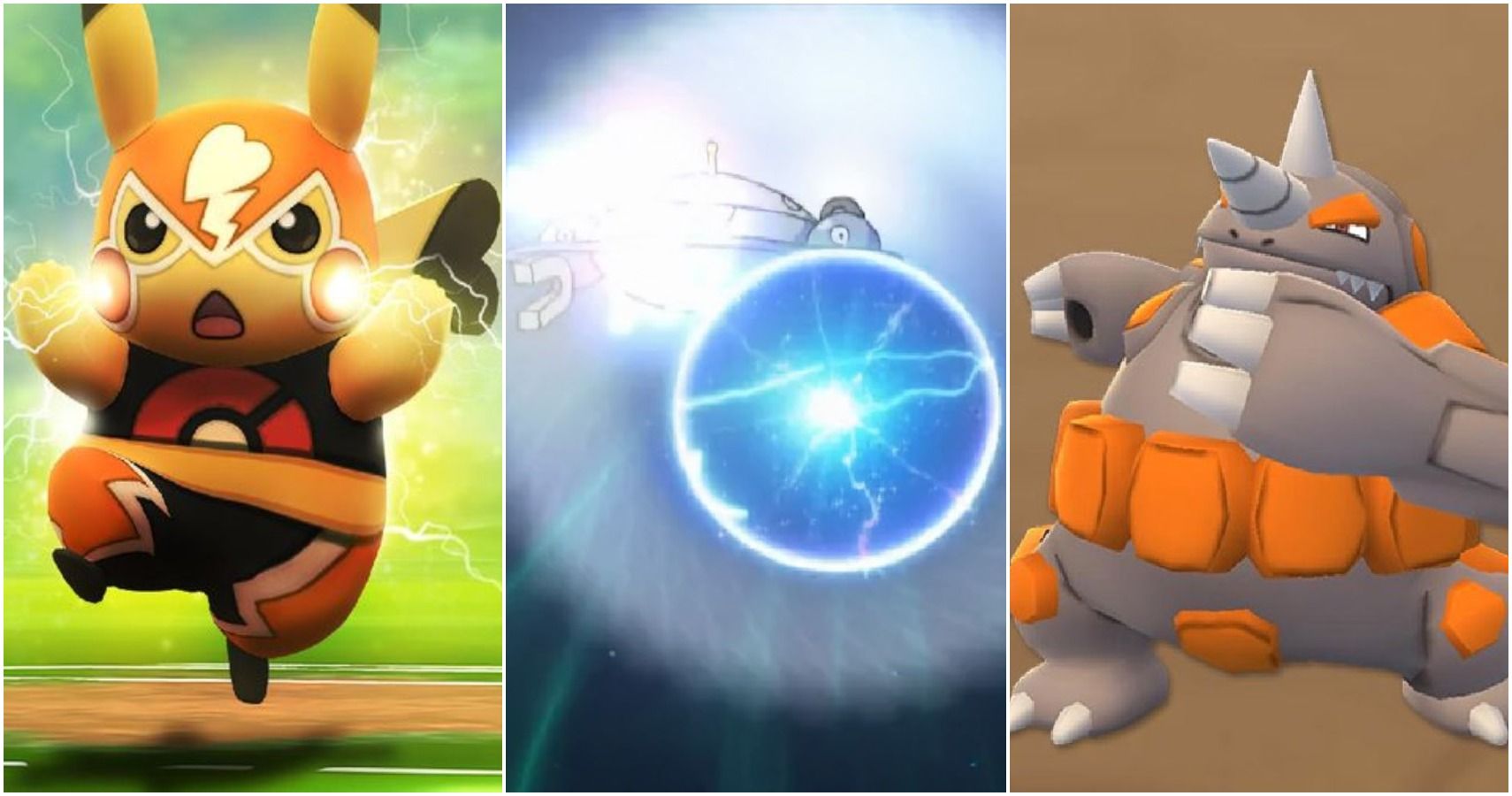
The 20 Best Charge Moves in Pokemon GO (& The Best Pokemon That Learn Them)
There are plenty of charge moves to choose from in Pokemon Go. But among these, which are the best, and which Pokemon should you catch to use them?That said, Generation 6 was not without its problems, taking steps back for the series. Notably, the difficulty curve was at its absolute lowest. Before Sword & Shield was released, X & Y were the easiest Pokemon games by a wide margin. Despite being remakes of one of the harder Generations. Omega Ruby & Alpha Sapphire, unfortunately, didn’t fare much better, either.
The champion of the Kalos region, Diantha, is at the top of this trainer food chain, and her team is one of the few that can possibly give some trainers pause in battle. She has an Aurorus that is capable of setting up Light Screen and Reflect, which can make her team a bit tougher to knock out. Her Hawlucha will also buff itself with Sword Attack, so take it down quickly, and don't let her Mega Gardevoir stick around too long, either. Here is Diantha's team in detail:
Hawlucha – Lv.64 (Limber) Fighting/Flying
- Sword Dance
- Poison Jab
- Flying Press
- X-Scissor
Tyrantrum – Lv.65 (Strong Jaw) Rock/Dragon
- Head Smash
- Crunch
- Dragon Claw
- Earthquake
Aurorus – Lv.65 (Refrigerate) Rock/Ice
- Thunder
- Blizzard
- Light Screen
- Reflect
Gourgeist – Lv.65 (Pickup) Ghost/Grass
- Trick-or-Treat
- Phantom Force
- Seed Bomb
- Shadow Sneak
Goodra – Lv.66 (Sap Sipper) Dragon
- Dragon Pulse
- Muddy Water
- Fire Blast
- Focus Blast
Gardevoir [Mega] – Lv.68 (Trace [Pixilate]) Psychic/Fairy
- Moonblast
- Shadow Ball
- Psychic
- Thunderbolt
6 Generation 7
Reinforcing Generation 6's Direction
Pokemon Sun and Moon
- Platform(s)
- 3DS
- Released
- November 18, 2016
- Developer(s)
- Game Freak
- How Long To Beat
- 33 Hours
- Metascore
- 87
Pokemon Sun & Moon were letdowns for some as they attempted to reinvent a formula that had been growing stale on a mostly superficial level. Ultra Sun and Ultra Moon were likewise polarizing. While Generation 7 isn’t as easy as Generation 6, it is still not difficult.
Beginning with Generation 6, Pokemon simply stopped prioritizing offering any semblance of challenge. This could perhaps be excused in X & Y as the games were explicitly meant to be reintroductions to the franchise, but this ignores how Generation 1 wasn’t easy and the fact that Generation 7 doubled-down on all of its predecessor's streamlining habits.
The leading Pokemon expert of the region, Professor Kukui, is arguably the toughest trainer on the Alola islands. In the player's champion defense battle against him (Ultra Sun & Ultra Moon), he will come packing some of the highest-level NPC Pokemon in this Generation with most possessing somewhat viable movesets, like his his tricky Magnezone with Mirror Coat that can catch players off guard and his Braviary that is capable of buffing his team's Speed as well as forcing out the player's Pokemon with a status move. His 6th team slot will also depend on which starter the player chose, with the Prof having the final evolution of the line most type-effective against the player's choice.
Here is Professor Kukui's strongest team:
Lycanroc (Midday Form) – Lv.69 (Keen Eye) Rock
- Stone Edge
- Accelerock
- Crunch
- Stealth Rock
Alolan Ninetales – Lv.68 (Snow Cloak) Ice/Fairy
- Dazzling Gleam
- Blizzard
- Ice Shard
- Safeguard
Braviary – Lv.68 (Keen Eye) Normal/Flying
- Crush Claw
- Brave Bird
- Tailwind
- Whirlwind
Magnezone – Lv.68 (Sturdy) Electric/Steel
- Thunderbolt
- Thunder Wave
- Flash Cannon
- Mirror Coat
Snorlax – Lv.68 (Thick Fat) Normal
- Body Slam
- Crunch
- Heavy Slam
- High Horsepower
[If Player Chose Rowlet] Incineroar – Lv.68 (Blaze) Fire/Dark
- Flare Blitz
- Darkest Lariat
- Outrage
- Cross Chop
[If Player Chose Litten] Primarina – Lv.68 (Torrent) Water/Fairy
- Sparkling Aria
- Aqua Jet
- Hyper Voice
- Moonblast
[If Player Chose Popplio] Decidueye – Lv.68 (Overgrow) Grass/Ghost
- Leaf Blade
- Spirit Shackle
- Sucker Punch
- Brave Bird
5 Generation 2
Notably Easier Than Its Predecessor
Pokemon Gold and Silver
- Platform(s)
- Game Boy , Game Boy Color , Game Boy Advance
- Released
- October 14, 2000
- Developer(s)
- Game Freak
- How Long To Beat
- 30 Hours
Pokemon Gold & Silver deserve a lot of credit for not only expanding upon the franchise mechanically but also offering more content on a scale reserved for only the grandest sequels. Generation 2 is a more accessible, more compelling adventure that takes Trainers across two regions in an epic that could have comfortably ended the series on a high.
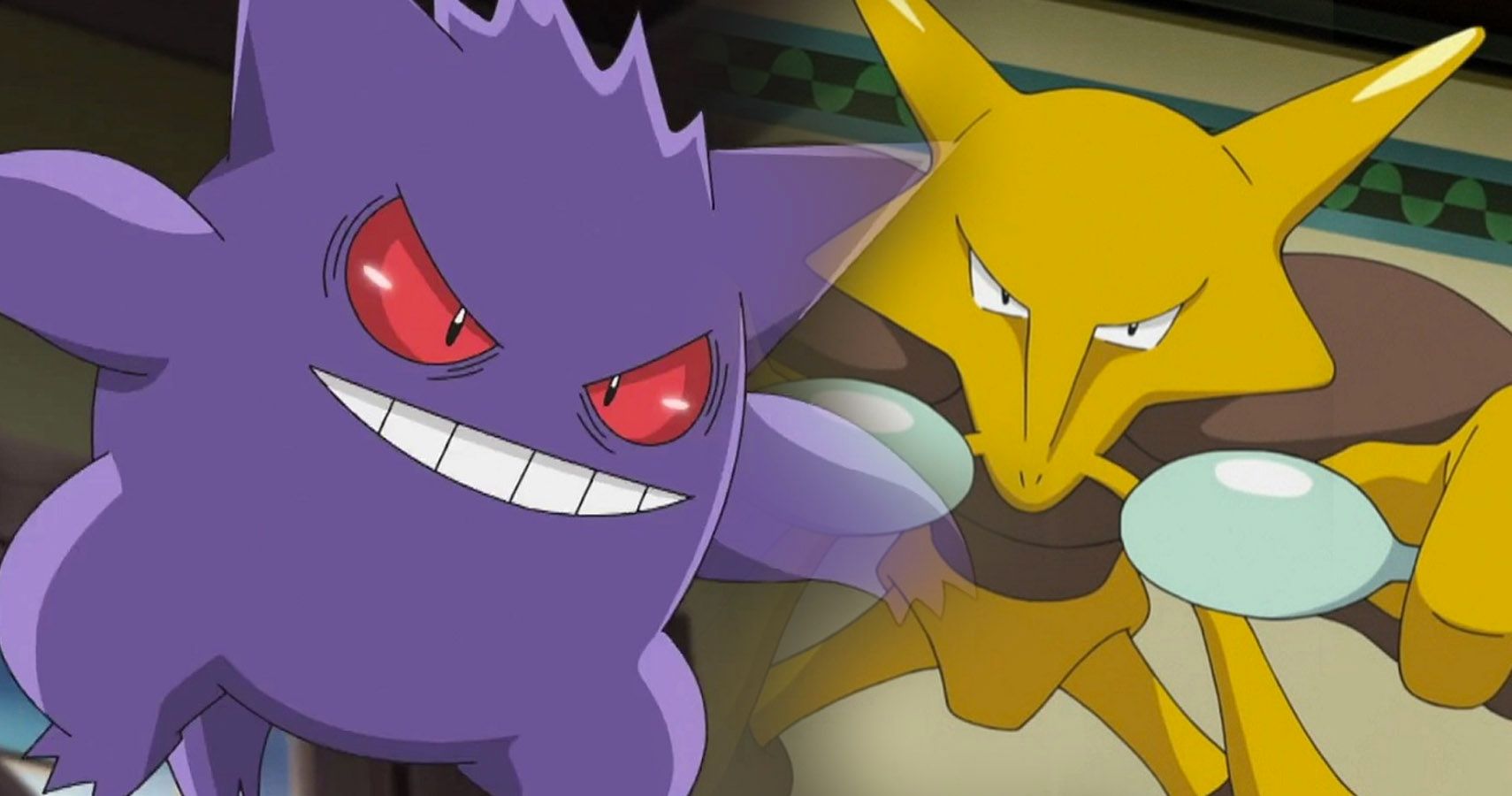
Every Pokémon That Can Be Evolved By Trading, Ranked
Some Pokémon can only evolve by being traded, and some of those Pokémon are better than others...It’s not unusual to see Generation 2’s praises sung high, but even at release, Gold & Silver had some problems. Most notably, the difficulty curve. Generation 2 is so much easier than Generation 1, it’s jarring. The main game never requires the player to have a team any stronger than their 50s. If nothing else, there are a few choke points that recognize the lower curve as a means to combat it (Whitney, Silver’s fights, Lance, Red.)
Though, at the top of these moderate challenges is the legendary trainer Red, the former Kanto Champion (and protagonist from the Gen 1 games) who now lives as a hermit in Silver Cave, honing their might with their over-leveled team. Despite the Gen 2 games not being particularly hard, Red's team stands out for having actual strategies that can potentially be dangerous, depending on the order in which he sends out his Pokemon. For example, if his Venusaur with Sunny Day is sent out before his Charizard, the player may have to deal with exceptionally powerful Fire-type attacks. He also has a Pikachu at a higher level than almost any other NPC Pokemon in the entire franchise and a Snorlax that simply refuses to go down, both of which should not be underestimated.
Here is Red's team when one finds him in Silver Cave:
Espeon – Lv.73 Psychic
- Mud Slap
- Swift
- Reflect
- Psychic
Snorlax – Lv.75 Normal
- Amnesia
- Rest
- Snore
- Body Slam
Venusaur – Lv.77 Grass/Poison
- Sunny Day
- Solarbeam
- Giga Drain
- Synthesis
Charizard – Lv.77 Fire/Flying
- Flamethrower
- Wing Attack
- Slash
- Fire Spin
Blastoise – Lv.77 Water
- Rain Dance
- Surf
- Blizzard
- Whirlpool
Pikachu – Lv.81 Electric
- Charm
- Quick Attack
- Thunderbolt
- Thunder
4 Generation 1
Not Perfectly Balanced, But A Decent Challenge
Pokemon Red and Blue
- Platform(s)
- Game Boy
- Released
- September 28, 1998
- Developer(s)
- Game Freak
- How Long To Beat
- 26 Hours
Generation 1 may be lacking in the modern quality of life fixtures, but on a pure design level, it features some of the franchise's best dungeons and enemy party composition. There are always plenty of trainers to fight, wearing down even over-leveled Pokemon. The higher encounter rate plays into this as well, but Generation 1 knows how to approach difficulty.
This is best conveyed through the starters: Bulbasaur offers the easiest main game playthrough, Squirtle offers a decent challenge, and Charmander has a rough start akin to a hard mode. The curve balances itself out around the third Gym, but Generation 1 can be a decent challenge from start to finish. The Elite Four in particular can be a real wake-up call for any trainers relying primarily on their starter. Blue is one of the most formidable Champions in the series.
Although Blue's team is different in Pokemon Yellow than it was in Red & Blue, many consider the latter team compositions to be tougher, particularly the Kanto Champion's Alakazam, which is the strongest Psychic Pokemon found in the game until one meets Mewtwo in Cerulean Cave. Players should also be wary of his Rhydon that knows one of the rare One-Hit-KO moves. It should also be mentioned that his team changes depending on the starter the player picked since he will have the final evolution of one of the others, along with a rotation of Gyarados, Exeggutor, or Arcanine depending on what coverage his team needs to support his starter. Here is Blue's team during the Red & Blue champion battle:
Pidgeot – Lv.61 Normal/Flying
- Wing Attack
- Sky Attack
- Mirror Move
- Whirlwind
Alakazam – Lv.59 Psychic
- Psybeam
- Psychic
- Reflect
- Recover
Rhydon – Lv.61 Ground/Rock
- Leer
- Tail Whip
- Fury Attack
- Horn Drill
[Appears If Blue Does Not have Blastoise] Gyarados – Lv.61 Water/Flying
- Dragon Rage
- Hydro Pump
- Hyper Beam
- Leer
[Appears If Blue Does Not have Charizard] Arcanine – Lv.63 Fire
- Ember
- Leer
- Roar
- Take Down
[Appears If Blue Does Not have Venusaur] Exeggutor – Lv.63 Grass/Psychic
- Hypnosis
- Barrage
- Stomp
- Leech Seed
[If Player Chose Bulbasaur] Charizard – Lv.65 Fire/Flying
- Fire Blast
- Rage
- Slash
- Fire Spin
[If Player Chose Charmander] Blastoise – Lv.65 Water
- Hydro Pump
- Blizzard
- Bite
- Withdraw
[If Player Chose Squirtle] Venusaur – Lv.65 Grass/Poison
- Growth
- Mega Drain
- Razor Leaf
- Solarbeam
3 Generation 3
A Solid Middle-Ground
Pokemon Ruby and Sapphire
- Platform(s)
- Game Boy Advance
- Released
- March 19, 2003
- Developer(s)
- Game Freak
- How Long To Beat
- 35 Hours
- Metascore
- 82
Ruby & Sapphire are far from the hardest games in the series, but the rest of Generation 3 does a really good job at offering a difficulty curve that’s accessible to newcomers while gripping for veterans. FireRed and LeafGreen are remakes of Generation 1, and they generally do a great job of upping the difficulty by just a bit. With Gen 3’s new mechanics, the remakes become the definitive way to experience Kanto.
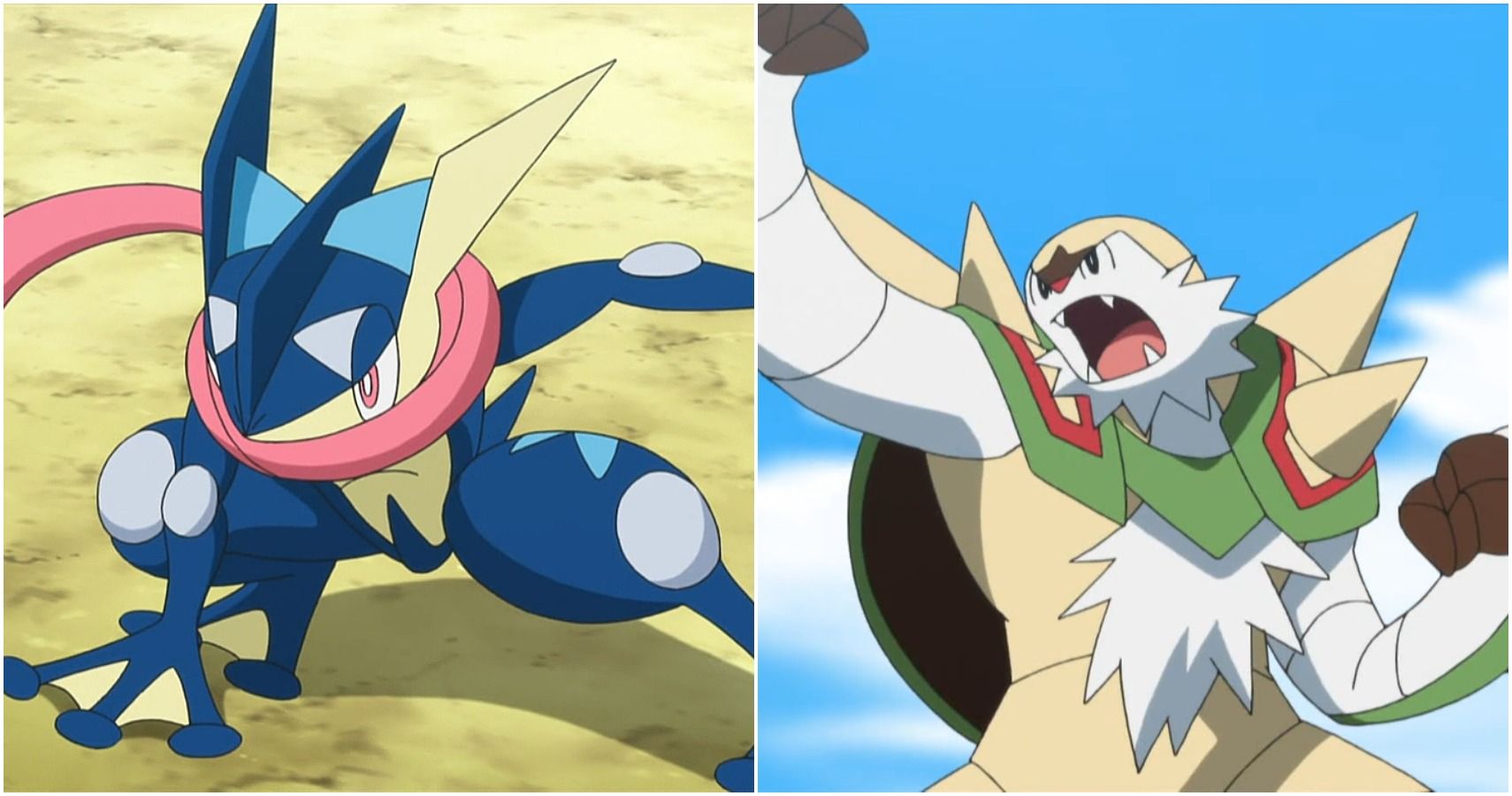
18 Most Competitively Viable Starter Pokemon
Choosing your starter is one of the most important decisions you'll make in any Pokemon game. These starters are for trainers with a competitive edge.Emerald rebalances Ruby & Sapphire by a fair bit, making the main game tougher in the process. Wallace is a weaker Champion than Steven, but the latter does return as one of the series’ more challenging post-game bosses. More importantly, Emerald introduces the Battle Frontier, and its first depiction is fairly difficult. Succeeding at the Battle Frontier requires a level of strategy the main games rarely ever need.
In this manner, Steven Stone echos the way Red went off into the depths of a dank cave for the solitude and space required to become a truly powerful trainer. Because of his training in Meteor Falls, where the player can find him after beating the Hoenn Elite Four and Champion, he has become the most powerful trainer in the region. His team boasts high levels and some decent movesets, though they are notably resilient due to being all Steel, Rock, and Ground types. Here is Steven's team when encountered in Meteor Falls:
Skarmory – Lv.77 (Keen Eye) Steel/Flying
- Toxic
- Aerial Ace
- Steel Wing
- Spikes
Claydol – Lv.75 (Levitate) Ground/Psychic
- Reflect
- Ancientpower
- Light Screen
- Earthquake
Aggron – Lv.76 (Sturdy) Steel/Rock
- Thunder
- Solarbeam
- Dragon Claw
- Earthquake
Armaldo – Lv.76 (Battle Armor) Rock/Bug
- Water Pulse
- Aerial Ace
- Ancientpower
- Slash
Cradily – Lv.76 (Suction Cups) Rock/Grass
- Giga Drain
- Ingrain
- Ancientpower
- Confuse Ray
Metagross – Lv.78 (Clear Body) Steel/Psychic
- Earthquake
- Shadow Ball
- Psychic
- Meteor Mash
2 Generation 4
Platinum Is Especially Hard
Pokemon Diamond and Pearl
- Platform(s)
- 3DS , Nintendo DS
- Released
- April 22, 2007
- Developer(s)
- Game Freak
- How Long To Beat
- 41 Hours
- Metascore
- 85
Generation 4 isn’t that much harder than Generation 3 – and certainly not when it comes to the Battle Frontier – but Platinum is much harder than Emerald was and HeartGold and Soul Silver do an incredible job at remaking Generation II, ironing out Johto’s imbalanced difficulty curve.
Not only is Sinnoh one of the tougher regions in general, but Platinum also beefs up the storyline to include even more boss fights– many of which are actually a challenge. Cyrus was by no means a pushover in Diamond & Pearl, but he puts up a much better fight in Platinum. More notably, Cynthia might very well be the single strongest Champion in the series.
As for HeartGold and SoulSilver, it’s just nice to be able to play through a version of Johto that requires consistent thought. Johto itself is still on the easier side, but Kanto has been rebalanced and the post-game is harder on a whole.
The Sinnoh Champion Cynthia's team (after the Stark Mountain event) is definitely the most dangerous team in the Generation for possessing such a variety of powerful strategies that no player can fully prepare for the fight with her unless they know what's coming. Here is Cynthia's team after Stark Mountain:
Spiritomb – Lv.74 (Pressure) Ghost/Dark
- Dark Pulse
- Psychic
- Silver Wind
- Ominous Wind
Roserade – Lv.74 (Natural Cure) Grass/Poison
- Energy Ball
- Shadow Ball
- Sludge Bomb
- Extrasensory
Lucario – Lv.76 (Steadfast) Fighting/Steel
- Aura Sphere
- Dragon Pulse
- Psychic
- Earthquake
Togekiss – Lv.76 (Hustle) Normal/Flying
- Air Slash
- Aura Sphere
- Water Pulse
- Psychic
Milotic – Lv.74 (Marvel Scale) Water
- Surf
- Ice Beam
- Mirror Coat
- Aqua Ring
Garchomp – Lv.78 (Sand Veil) Dragon/Ground
- Dragon Rush
- Earthquake
- Brick Break
- Giga Impact
1 Generation 5
Hard Mode
Pokemon Black and White
- Platform(s)
- Nintendo DS
- Released
- March 6, 2011
- Developer(s)
- Game Freak
- How Long To Beat
- 32 Hours
- Metascore
- 87
When looking at Pokemon as just another series of RPGs, Generation 5 is the best of the bunch. Great storytelling, good party variety, and by far the best difficulty curve in the series. On their own, Black/White and Black 2/White 2 offer a healthy challenge, but Generation 5 actually features easy and hard modes.
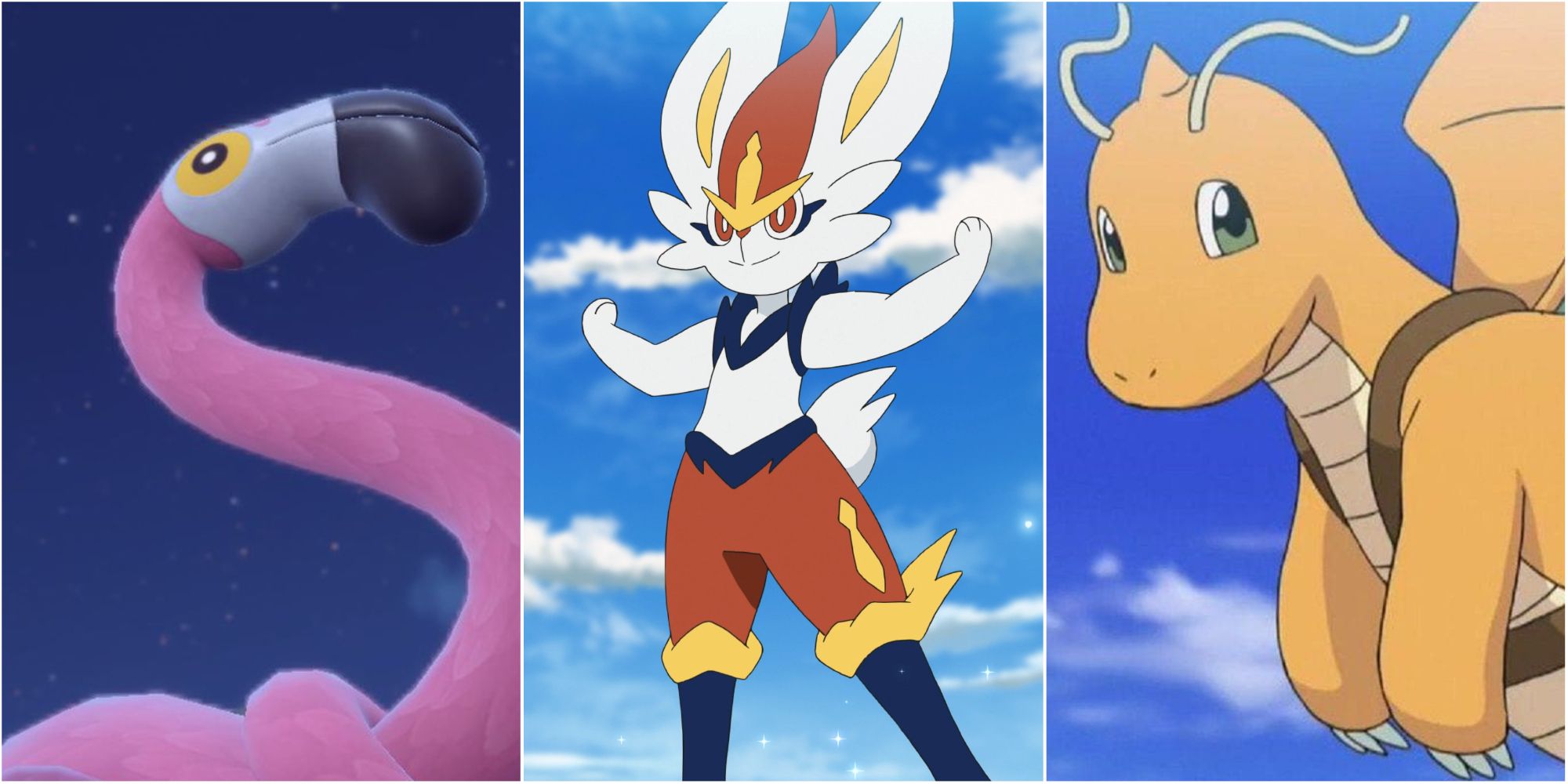
23 Pokemon With Hidden Abilities Competitive Players Must Have
Hidden abilities can be a powerful advantage in Pokemon's competitive gameplay. These Pokemon in particular have worthwhile hidden abilities.Challenge Mode in Black 2/White 2 might very well be the best Pokemon experience there is. All trainers have higher-leveled Pokemon, and Gym Leaders and the Elite Four all have extra Pokemon. It’s a shame the franchise went from offering Challenge Mode in Generation 5 to plummeting the difficulty in Generation 4.
Although the NPC is considered the strongest in this Generation, the green-haired trainer known as N is more known for his close ties with either Reshiram or Zekrom (depending on the version). It is this trainer's Season Battle teams that stand out as the strongest because in each season he has a different themed team that takes advantage of the immensely powerful weather mechanics. His Spring appearance brings a rain-based team that is something that would be viable in competitive gameplay against other real people.
Here is N's supremely strong Spring Battle team:
Politoed – Lv.77 (Drizzle) Water
- Hydro Pump
- Focus Blast
- Hypnosis
- Psychic
Lanturn – Lv.75 (Volt Absorb) Water/Electric
- Thunder
- Signal Beam
- Hydro Pump
- Stockpile
Tentacruel – Lv.75 (Clear Body) Water/Poison
- Rain Dance
- Scald
- Giga Drain
- Barrier
Kabutops – Lv.75 (Swift Swim) Rock/Water
- Stone Edge
- Aqua Jet
- X-Scissor
- Low Kick
Omastar – Lv.75 (Swift Swim) Rock/Water
- Rain Dance
- Ice Beam
- Hydro Pump
- Earth Power
Starmie – Lv.75 (Natural Cure) Water/Psychic
- Hydro Pump
- Psychic
- Ice Beam
- Thunder
Pokemon Scarlet and Violet are available now for Nintendo Switch.

